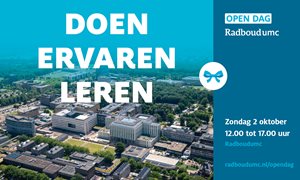 Malaria parasites in the body of children with malaria enhance the production of some specific smells that are emitted through the skin. These smells attract additional malaria mosquitoes, increasing the risk that these children are bitten.
Malaria parasites in the body of children with malaria enhance the production of some specific smells that are emitted through the skin. These smells attract additional malaria mosquitoes, increasing the risk that these children are bitten.
The scientists noticed in earlier research that children who carry the malaria parasite, Plasmodium, are more attractive to malaria mosquitoes than healthy children. The Wageningen scientists from the Laboratory of Entomology, together with researchers in Great Britain, Kenya and Nijmegen, The Netherlands are continuing their search for the mechanism of this increased attraction. They examined the amounts and identity of the odours that children emit once infected with the malaria parasite by the bite of a mosquito.
Strong odours
Their research now shows that the amount of some specific odour compounds in children infected with malaria is much higher than in malaria-free children. The researchers were able to precisely determine the nature and concentrations of these compounds. Heptanal, octanal and nonanal, which are known as aldehydes in chemistry , are found to be emitted at higher levels by children with malaria. "These are fairly common smells, which are described as fruity or grassy. But for malaria mosquitoes they are very attractive," says Wageningen researcher Jetske de Boer. The proportion of aldehydes appears to increase from about 15% of the total odour bouquet to almost 23%. Furthermore, the researchers saw that the higher the density of parasites in the blood, the more of the three aldehydes are emitted.Malaria control
The new findings provide additional opportunities to combat malaria. "Now that we have identified and quantified the aldehydes associated with malaria infection, we understand more of the parasite's infection route. That also creates opportunities to intervene in that chain. We can improve our odour-baited traps for mosquitoes by adding a considerable amount of these attractants," says researcher Jetske de Boer, who led the research in Kenya. "Moreover, these compounds can serve as biomarkers with which diagnostic tools can be developed, without the physician having to draw blood. Faster and a lot more child-friendly."To perform the measurements, the research team in Western Kenya collected odour samples from 56 children between 5 and 12 years old. A special plastic bag was placed around the foot of each child, and air was blown through the bag for three hours. The foot odour collected on a filter was analysed by British researcher Ailie Robinson of the London School of Hygiene and Tropical Medicine. She also studied whether the antenna, the 'nose' of the mosquito, responds differently to the collected odours of children with and without malaria. Using nylon socks worn by the children for one night, it was shown that the body odour of children with malaria is indeed more attractive to mosquitoes than the odours of malaria-free children.
Related news items

Joint research in regional hospitals New research projects from promotion fund
22 November 2022Four research projects have been honored in the promotion fund of the Radboudumc and four regional hospitals. The research projects, which are a collaboration between CWZ, Jeroen Bosch Hospital, Rijnstate, Sint Maartenskliniek and the Radboudumc will receive a contribution of 240,000 euros.
go to page
New Radboudumc PhD thesis guidelines & Rules composition Manuscript Committee
8 November 2022The new PhD guidelines replace the current 2019 guidelines and are applicable to anyone pursuing a doctoral degree within the medical faculty (including PhD candidates that are currently participating in the Donders Graduate school). The guidelines are now available.
go to page
L’Oréal-Unesco For Women in Science grants now open to researchers in Life Sciences and STEM disciplines
8 November 2022The eleventh call for applications of the Dutch L’Oréal-Unesco For Women in Science fellowships opens on 16 January 2023. But this year, it’s a little different: next to researchers in Life Sciences, women working in the STEM disciplines can also apply.
go to page
Do you want to participate in producing a short film about your PhD research?
27 September 2022In the BMS master course 'Moving Science-using film in science communication' master students will have to make a short film on a scientific subject. And what better subject than a PhD project? Sign up here!
go to page
Take a special look inside Radboudumc on 2 October Open Day for young and old
12 September 2022On Saturday 1 and Sunday 2 October, the Radboud university medical center, Radboud University and the HAN are participating in the 'Weekend van de Wetenschap'. At all locations there are fun and interesting programs for young and old.
go to page
